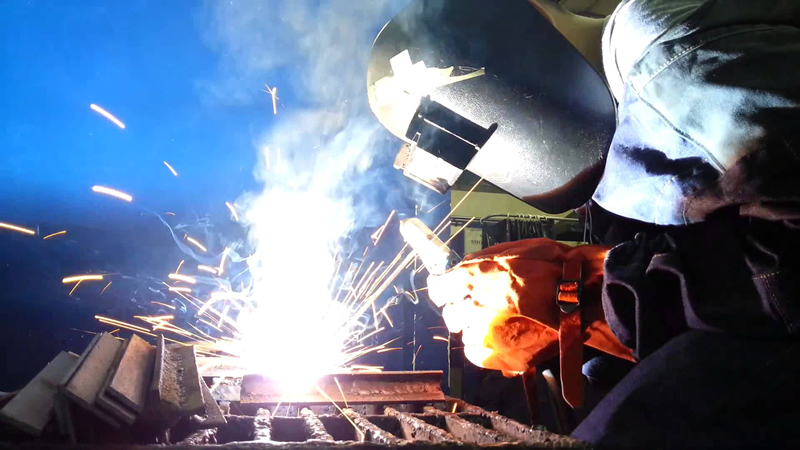In this article we will explain why some welding machines, due the type of current they use, can have advantages with respect to the others.
Welding machines that use coated electrodes can be AC (alternating current) as DC (direct current) or have both current outputs.
Welding machines AC
In this section, we will refer to welding machines that use electrodes and that only have AC (alternating current) output.
The welding quality of this type of machines is not optimal, not by the operator, but by the output of the current.
This type of welding machines with only AC (alternating current) output, as the name implies, causes the current to alternate in time. Since is not a constant current, the delivery of heat varies over time.
What does this mean, when talking about welding? In a few words, that the welding will not be even. You could do good welding points, but not long cords.
These would be asymmetric, since the current varies from positive to negative and that is perceived in the welding, in the electric arc.
When this happens, not having a weld arc or a constant heat delivery, that makes the operator try harder so the welding is well done.
To solve this, it is best to have equipment that is both AC and DC (direct current), because the latter, being a constant current, provides a fixed power that allows to have homogeneous cords.
DC welding machines
AC machines are widely used by those who work with welding because they are the most cheap in the market. But they are not necessarily the machines with greater performance and better results when working.
Although the price difference is not much, for a better equipment that has a DC output, an additional investment is needed.
Among the benefits obtained when working with a DC welding machine, apart from the welding stability, is that long, homogenous cords can be made, decreasing or eliminating the probabilities of defect in the welding.
There is greater control of the heat generated on the piece, which can even be regulated, due to the greater control in the current, because it is direct.
Another benefit of DC welding machines is that can be adapted a welding process known as TIG or Argon, or even other processes that would not be possible in AC welding machines.
Even more, the recommendation is not to use AC welding machines but only DC, like the inverting machines, which are used a lot today due the comfort of work they offer, the possibility of working at heights and the stability in the current.
That is why the inverter machines do not use AC output. That output can be seen in the welding machines of previous models, such as those of the 1970s, where there were still no technologies that could make the current more stable.
As a summary
For all these reasons the use of AC welding machines is not recommended, as they are obsolete in terms of use, quality and stability that the arc could present.
On the contrary, the DC welding machines result in better quality work and greater versatility of use.






This Post Has 4 Comments
Hey,
Thanks for this in-depth review. I need a welder machine and it should be good I have no idea about welder-machine.
So I saw you write about this he said which one is better and mentioned something below Thank you for that.
Very informative and impressive post you have written,
this is quite interesting and I have gone through it completely, an upgraded information is shared, and keep sharing such valuable information.
Thank you for your comment. We are glad you like it.
Hey,
benefitted from reading your welder blog. Thanks for sharing your experience